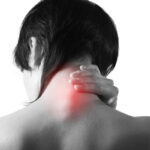
Transcutaneous Electrical Nerve Stimulation The transcutaneous electrical nerve stimulation (TENS) it's a analgesic stimulation which it is carried out with pulses that reach the peripheral nervous system via electrodes placed on the area to be treated. The TENS stimulation is typically carried out with biphasic, symmetrical pulses (wave block) and with frequencies that may vary from 8 a 200 Hz. This type of stimulation analgesic, that allows fight pain without resorting to drugs, uses 2 several physiological mechanisms to achieve this result:
- The endogenous production of beta-endorphins and encephalins thanks to the activation of the endorphinic system with very low stimulation frequencies ( < 8 Hz). This type of stimulation, that it has slow onset, It produces a general pain-relieving effect.
- Serotonin production and blocking of pain signals (gate control) to the higher centers. The stimulation is done in this case with higher frequencies ( starting from 80 Hz)
Serotonin and the "gate control" mechanism realize rapid analgesic action but of short duration.
METHOD’ APPLICATION
TENS, that use a current biphasic, symmetrical and compensated, They are used according to two different modes of application : – sensory inhibition segment it against acute and localized pain – release of endorphins to treat chronic and widespread pain.
ANALGESIC ACTION FOR INHIBITION SENSITIVA segmental
In humans, they can be found two types of afferent fibers snowy, meaning by this term the fibers that conduct information from the periphery up to encephalic level. The first are of large diameter fibers, denominate fibre A-beta, responsible for conducting the tactile sensitivity from the periphery up to the central level. the second, denominate fibre A-delta, They are of smaller diameter, level and lead to brain sensitivity to pain. A further differentiation between these two types of fibers, It is constituted by the fact that the former have a low excitation threshold, while the latter show a more elevated excitatory threshold. On the signal path dolorifico from the periphery to the center it is, in the spinal cord, an inhibitory interneuron, which acts as a signal of the same selector. The TENS Corrente, stimulating the A-beta fibers large diameter, It goes to excite the inhibitory interneuron. Its activation, which prevents pain signals to reach the brain level, blocks the sensation of pain.This mechanism has been referred to as, by Melzack and Wall who were those who identified him in 1965, "Gate effect" or Gate Control ". In this mode of TENS stimulation pulses should be of short duration (< 1 msec) with a frequency between 80 e 150 Hz. The intensity should be comfortable and only produce a tingling sensation (threshold of tactile sensitivity). To be effective the treatments will have a duration of at least 30′
ANALGESIC ACTION FOR THE LIBERATION OF ENDORPHINS
Endorphins and enkephalins are proteins produced in the brain with functions similar to morphine and present in various structures of the central nervous system , for this reason, especially effective for pain sedation. These morphs Neuro natural mediators of analgesia are endogenous: You can be fixed on the receptors cell phones of strutture brain with the thalamus, the limbic system, netting fabric producing sedation of pain paragoble to that of morphine. Electrical stimulation with TENS currents can stimulate the release of these endogenous morphine-like substances. Studies have indeed shown that treatment of 30′ with currents of low frequency and high intensity, capable of producing a muscular twitch rhythmic almost to the threshold of pain, can raise the endorphin rate of 20% compared to baseline values. This increase remains in the 30′ following the arrest of treatment.
Neuro natural mediators of analgesia are endogenous: You can be fixed on the receptors cell phones of strutture brain with the thalamus, the limbic system, netting fabric producing sedation of pain paragoble to that of morphine. Electrical stimulation with TENS currents can stimulate the release of these endogenous morphine-like substances. Studies have indeed shown that treatment of 30′ with currents of low frequency and high intensity, capable of producing a muscular twitch rhythmic almost to the threshold of pain, can raise the endorphin rate of 20% compared to baseline values. This increase remains in the 30′ following the arrest of treatment.

